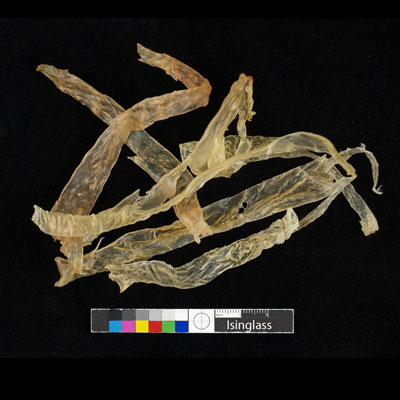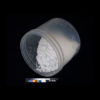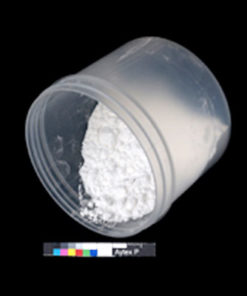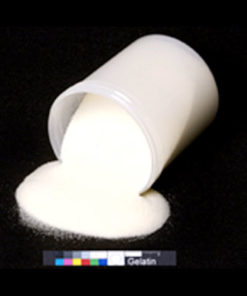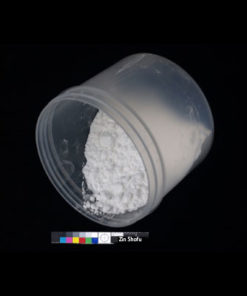High quality isinglass from sturgeon farm-raised in Germany. Isinglass is a high strength adhesive with a low viscosity and low gloss. Our isinglass is cleaned, prepared and dried according to conservation needs.
Use in conservation: consolidation of flaking media, vellum repair, remoistenable tissue
Sturgeon, species Acipenser baeri: A large fish of the family Acipenseridæ, having an elongated, almost cylindrical, body protected by longitudinal rows of bony scutes and a long tapering snout, found widely distributed in the rivers and coastal waters of the north temperate zone; especially a fish belonging to either of the genera Acipenser and Scaphirhynchops, A. sturio being the common sturgeon of the Atlantic. It is a ‘royal’ fish esteemed as an article of food, and the source of caviar and isinglass.¹
Isinglass is retrieved from the inner membrane of the air/swim bladder in the sturgeon fish. Originally, most sturgeon was caught from rivers discharging into Caspian and the Black Sea and with the high value market of the fish many sub species with inferior quality are being caught in other countries like India and Brazil.
Polistini imports isinglass from sturgeon farm-raised in Germany. A conservator collaborates with a farm having the bladder prepared and dried to specifications important for conservation needs. The outer muscle lining is removed making sure the bladder is cleaned of blood. The breeding of the fish has to comply with very strict regulations and environmental specifications under the German law.
To guarantee highest purity and maximum adhesive strength meticulous preparation is key. The preparation does not include any preservatives or other additions; the bladder is prepared and simply dried.
Recipe for adhesive preparation:
- Cut or tear dried bladder into small pieces, if bladder is too hard soak for an hour or two and then cut.
- Soak pieces in distilled water for 12-16 hours.
- Ratio is 1 part and 9 parts. For example 5g dried bladder and 45g water.
- Warm solution in a water bath between 45°C and 60°C (154F), note temperature of water not temperature of solution. It is important to neither go above or below those temperatures to guarantee best strength.
- Filter the warm solution through an inert cloth, such as cheesecloth.
- Pour a thin layer of solution onto a sheet of polyester or similar inert material.
- Dry solution for 24 hours (or even 48) in a shaded and well ventilated area.
- Store dried sheets preferably in a glass container. The first 3 days do not seal glass container, since there can be some residual moisture remaining.
Adhesive concentrations start at 1% in water, the concentration of the farm raised sturgeon bladder is lower than sturgeon from other origins. The addition of ethanol or honey to the solution is not recommended since it will alter the protein structure and therefore decrease in adhesive strength.
1From: http://dictionary.oed.com
Reference publications:
Maria Przybylo, “Langzeit-Löslichkeit von Störleim. Tatsache oder Märchen?” Verband Deutscher Restauratoren Beiträge, Heft 1, 2006
Quandt, Abigail B. (1996) “Recent Developments in the Conservation of Parchment Manuscripts.” The American Institute for Conservation, The Book and Paper Group Annual
Pataki, Andrea (2009)”Remoistenable Tissue Preparation and its Practical Aspects.” Restaurator Volume 30 No. 1 and 2
Related products
Uncategorized
Adhesives
Adhesives
Adhesives

